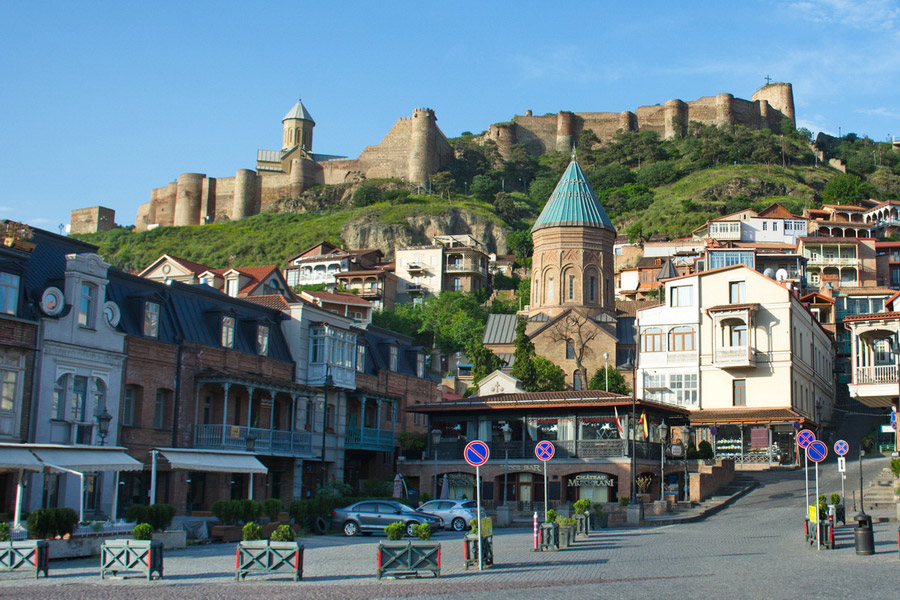
Tbilisi is a vibrant, modern metropolis with a population of over a million people. Today, the Georgian capital shines with glass-paneled skyscrapers and bustling highways. Yet, hidden in the heart of this lively city is a real treasure – the quiet, cozy area of the Old Town with its charming streets and authentic Tbilisi architecture. There's nothing quite like this historical gem anywhere else in the world. UNESCO has even nominated Old Tbilisi for inclusion in the World Cultural Heritage list.
The old part of Tbilisi encompasses the neighborhoods of the Sololaki Ridge along the banks of the Kura (Mtkvari) River. These picturesque areas, with their steep rocky cliffs and hot underground springs, have been inhabited since ancient times. Archaeological excavations have unearthed artifacts dating back to the 1st millennium BC. Today, the Old Town mainly features buildings from the 19th century. You'll find two- and three-story houses with sloping roofs and intricate wooden balconies. Cobblestone streets wind up and down, creating a complex labyrinth of mysterious passages and quaint courtyards where housewives dry laundry and old men play backgammon. Old Tbilisi is a world of its own, preserving the unique spirit of antiquity and the distinctive Georgian flavor to this day.
Meidan Bazaar Square and Surroundings
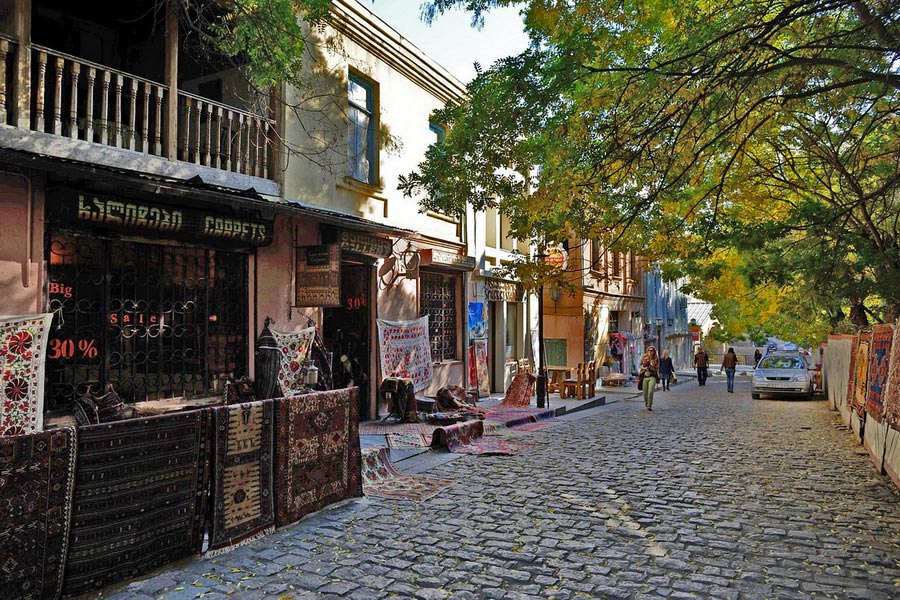
Meidan is the heart of the Old City, where the Great Silk Road once brought caravans loaded with exotic goods. This square was the meeting point of East and West, giving it the distinctive atmosphere of a bustling trade center. Nearby, in what is now Rue de Chardin, there was a large caravanserai with shops, stables for horses and camels, and hotel rooms for travelers. Today, this street is a lively area filled with bars, restaurants, and cafes ranging from those with a distinctly oriental flavor to pubs styled like 19th-century England. On summer evenings, Chardin Street comes alive with music and conversations in many languages.
In the past, this area was known as the Dark Row because the sky was obscured by dense fabric covers strung from house to house, providing shade from the scorching sun. The street is named after the 17th-century French traveler Jean Chardin, who wrote extensively about the beauty and uniqueness of Tiflis, mentioning the Old Town near the Kura River in his notes.
From Meidan Square, streets spread out in all directions, leading to the rest of the Old Town. Leselidze Street, now called Kote Afkhazi Street, starts here. Despite the new name, locals still refer to it by the old one. Today, this street is lined with souvenir shops, cafes, restaurants, wine stores, hotels, and inns. Both sides are shaded by plane trees, offering a cool refuge even on the hottest summer days.
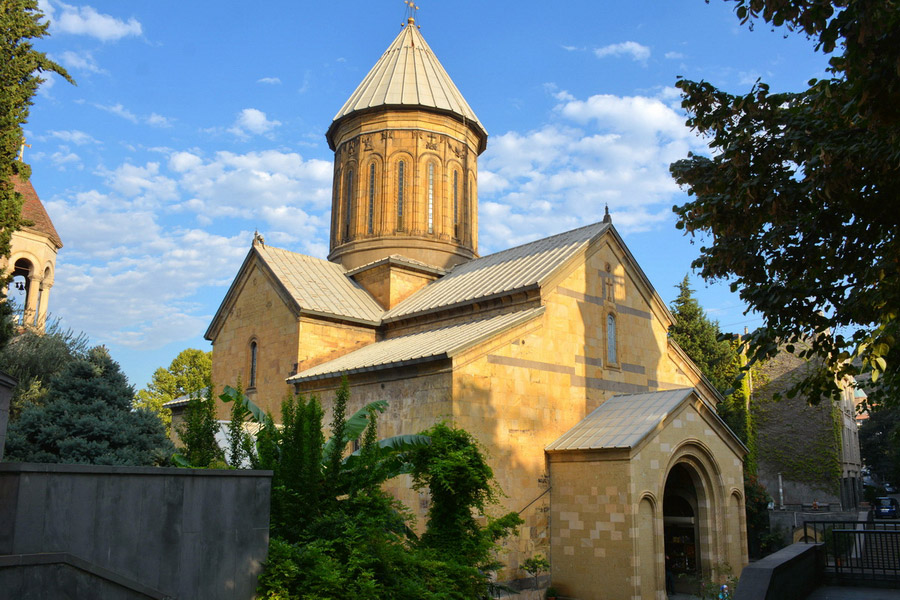
Nearby is Sioni Street, home to one of Tbilisi’s oldest churches, the Sioni Cathedral. This cathedral houses the residence of Catholicos of the Georgian Orthodox Church, Ilia II, and the sacred relic of the cross of St. Nino, made from two grapevines tied together with her hair. Sion Cathedral has been destroyed and rebuilt many times, always rising from the ruins.
Another ancient church, Anchiskhati, boasts a thousand-year history. Built in the 6th century, it is the oldest church in Tbilisi. Services are regularly held here, especially on church holidays when the hall is filled with parishioners of all ages.
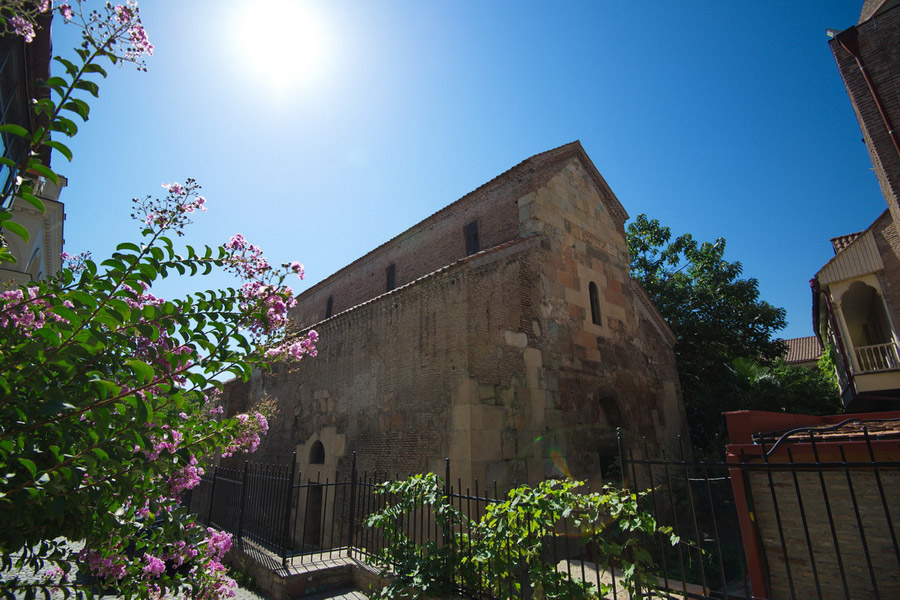
Not far from Anchiskhati, within Old Tbilisi, stands the eye-catching Rezo Gabriadze Marionette Theater. This unique building features a leaning tower with a huge clock and a balcony with a secret door. Several times a day, a mechanical angel emerges to the sound of a mysterious melody. The theater's colorful performances captivate both children and adults, making the puppets seem like real characters from the moment the show starts.

Now, let's explore the other side of Meidan Bazaar Square and discover more iconic sights that make Old Tbilisi so enchanting...
Abanotubani: The Sulfur Baths District
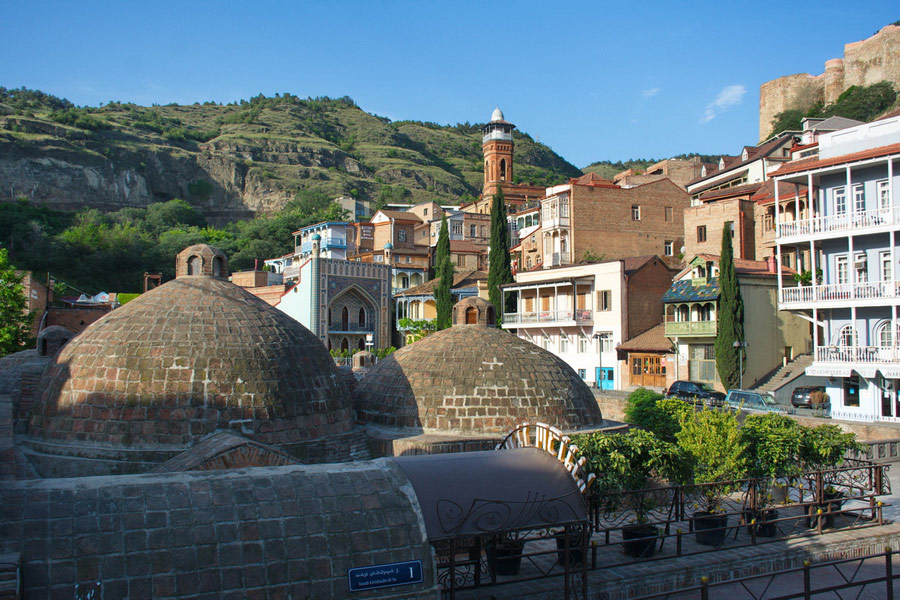
Legend has it that the ancient Georgian king Vakhtang Gorgasali moved the capital from Mtskheta to Tbilisi after discovering the miraculous sulfur springs bubbling from the ground. Today, this area is home to the famous Tbilisi sulfur baths, easily recognizable by their distinctive red-brick domes.
The history of Tbilisi began with these sulfur springs, first found in the Leghvtakhevi Gorge, also known as Fig Gorge. Nearby, the Tsavkisistskali River flows from the botanical garden down to the Kura River. Initially, the baths were carved out of the surrounding rocks, quickly filling with hot water. Over time, visiting these baths became fashionable, with bathing rooms adorned with intricate mosaics and the introduction of bath attendants.
In Abanotubani, there are about a dozen bathhouses where you can rent a private room or visit the common sections, with separate baths for men and women. Each bathhouse has its own unique design, often featuring walls and ceilings covered in mosaic tiles. The Orbeliani Bath, known for its richly decorated facade, is often referred to as the Mottled or Blue Bath due to its striking mosaic tiles.
Leghvtakhevi Gorge and Waterfall

From the bath complex, you can walk along the Tsavkisistskali River to the Leghvtakhevi Waterfall, nestled deep in the gorge. The waterfall varies with the seasons: roaring and full in spring, and a frozen monolith in winter. The walk to the waterfall offers incredible views of buildings perched precariously on the cliffs above. You'll also encounter a steep spiral staircase leading to hidden narrow streets and the Love Lock Bridge, where couples leave locks with their names.
Tbilisi Botanical Garden

Running parallel to Leghvtakhevi Gorge is Botanic Street, which leads to Tbilisi's Botanical Garden. This lush, green oasis is set on the slope of the Sololaki Ridge, providing a natural escape in the heart of the city. The Botanical Garden features over 4,500 species of plants, trees, and shrubs. It’s especially picturesque in late spring when lilacs, apricots, apple trees, and almonds bloom. You might find a field of bright scarlet poppies or a sakura tree in full bloom. The garden also has a bamboo grove and an impressive avenue of tall cypress trees. Another waterfall within the garden adds to its charm. Along the main path, you’ll find drinking water fountains and benches for resting in the shade.
Narikala Fortress

Narikala Fortress is a standout landmark in the Old City and one of the symbols of Tbilisi. Its history is deeply intertwined with that of the city. Before Tbilisi became the capital, it was called Shuris-tsikhe. This fortress was the main defensive structure and dominated the ancient settlement. During the reign of David IV the Builder, the fortress was strengthened and expanded, but it later suffered from earthquakes and invasions.
Narikala Fortress took on its current form in the 17th-18th centuries. In the 19th century, a gunpowder explosion severely damaged the citadel, destroying the Church of St. Nicholas built in the 12th century. Despite these losses, Narikala retained its unique character. The fortress was partially restored in 1996-1997, with a full-scale restoration starting in 2012. A cable car was installed, the area was cleared, and some towers were restored. Remnants of its former grandeur can still be found on the mountain ridge in the Sololaki district.
Monument Kartlis Deda
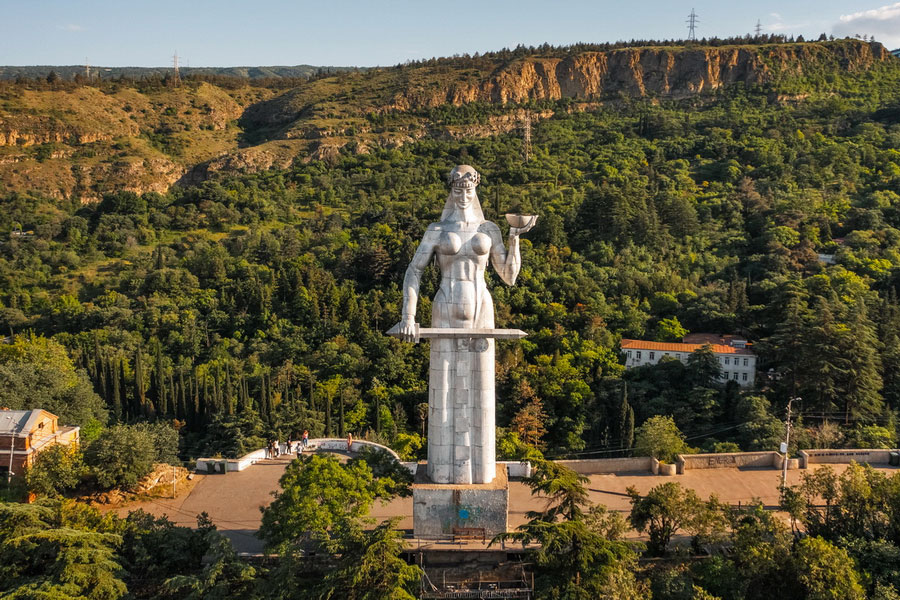
Near Narikala stands the “Kartvlis Deda” (“Mother of Georgia”) monument, a 20-meter-tall statue symbolizing the Georgian spirit. One hand holds a bowl of wine to welcome friends, while the other grips a sword to defend against enemies. The original wooden statue was erected in 1957 for Georgia’s 1500th anniversary and later covered in aluminum. The current monument, installed in 1997, includes an observation deck with stunning views of the city.
Metekhi Temple

Across the Kura River lies the Metekhi Temple, a historic and religious monument perched on a rocky cliff, built in the 12th century. Once accompanied by a palace, the temple saw a prison built nearby in 1921, later becoming a museum. Although many churches were demolished during Soviet rule, the Metekhi Temple was saved thanks to Georgian artist and public figure Dmitri Shevarnadze.
Within Metekhi’s walls are the relics of St. Shushanik, a martyr who resisted her husband Varsken's demand to renounce Christianity for Zoroastrianism. Her steadfast faith led to her sainthood. The temple also houses the revered Metekhi Icon of the Mother of God, a significant pilgrimage object for Christians worldwide.
Metekhi Temple, the oldest attraction in Tbilisi, has witnessed significant historical events and stands as a cultural symbol and valuable medieval monument.
Explore Old Tbilisi
Old Tbilisi is a vibrant mix of unique places, offering days of exploration. A stroll through its charming streets will reveal urban legends and fascinating facts from Tbilisi’s thousand-year history. To fully experience the historical center, we recommend exploring its narrow streets and hidden courtyards with an experienced guide. Discover the wonders of Old Tbilisi with Advantour!

